Chillers are complex systems that need to maintain an appropriate balance of pressure to function effectively. Any pressure anomalies, such as high pressure, can lead to operational issues and efficiency loss. Here, we explore some common causes of high pressure in chillers, along with recommended solutions.
In Air-cooled Chiller
An air-cooled chiller condenser is blown by a fan to dissipate heat, and the causes of high-pressure failures are:
1. Inadequate Condenser Function or High Ambient Temperature
In this scenario, heat dissipation from the condenser is inefficient, meaning the heat generated within the refrigeration cycle can’t be effectively removed. This failure can trigger a high-pressure alarm.
Solution: Inspect the fan for any mechanical issues and clear any dust or debris around the fan cover. After the system is powered down, consider cleaning it with compressed air or a water gun to enhance cooling efficiency.
2. Condenser Blockage
Blockage in the condenser impedes the condensation of high-pressure refrigerant gas within the system. This blockage leads to gas build-up, prompting a high-pressure alarm.
Solution: Clean and decontaminate the condenser. It’s advisable to contact the manufacturer for detailed guidance on the cleaning procedure to prevent damaging the unit.
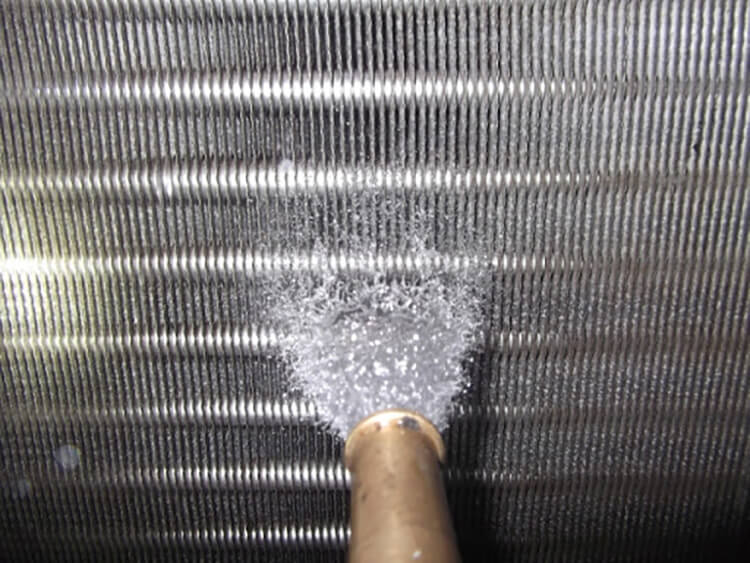
3. Air Entrapment in the System
This issue typically occurs in newly installed machines or after compressor maintenance, where air gets mixed in with the refrigeration system. The trapped air can’t be condensed and remains in the condenser, leading to a high-pressure alarm.
Solution: Open the air separation valve, exhaust port, or condenser inlet/outlet to vent the trapped air.
4. Excess Refrigerant in the System
Overcharging the system with refrigerant can yield a similar effect as air entrapment. If too much refrigerant is introduced, it can’t fully condense into liquid form. This excess refrigerant occupies a large section of the condensing pipe, reducing the condensing effect and increasing the pressure.
Solution: Carefully vent some refrigerant from the low-pressure side until the system reaches its optimal pressure.
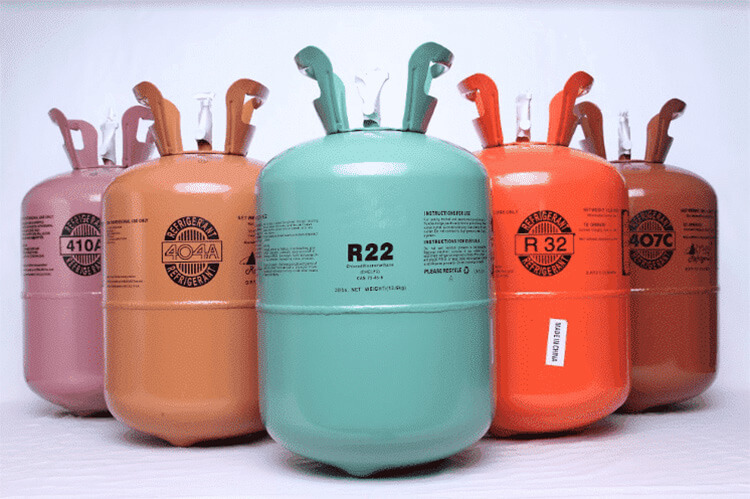
5. Expansion Valve with Insufficient Opening or Damage
The expansion valve is crucial for converting high-pressure liquid refrigerant into a vapor state. If the valve opening is too small, it can create high pressure at the condenser’s front side.
Solution: Gradually increase the expansion valve’s opening to reduce pressure. If the valve is damaged, it may need replacement.
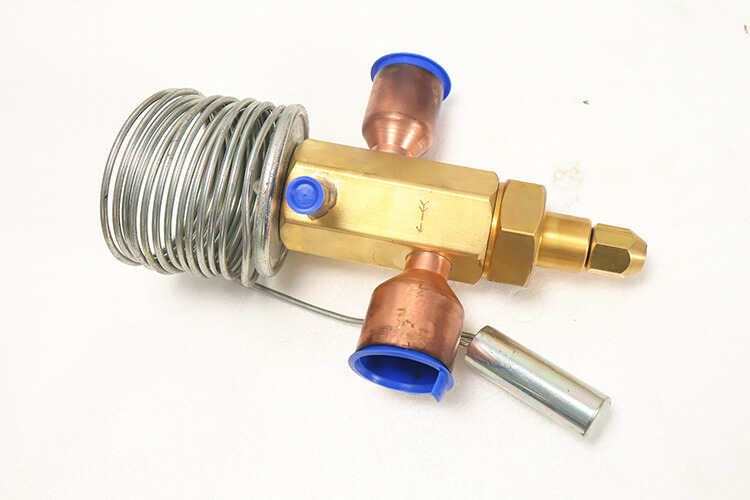
In Water-cooled Chiller
Water-cooled chillers are intricate systems with high-pressure alarms that signal issues primarily related to the cooling water system. Below, we discuss some common causes of high pressure in water-cooled chillers, along with the recommended corrective actions:
1. Cooling Water Valve is Closed
In a water-cooled unit, a cooling water tower supplies circulating cooling water. If the cooling water valve isn’t open, the cooling water won’t circulate, and the chiller can’t receive the supply.
Solution: Open the cooling water valve to allow circulation.
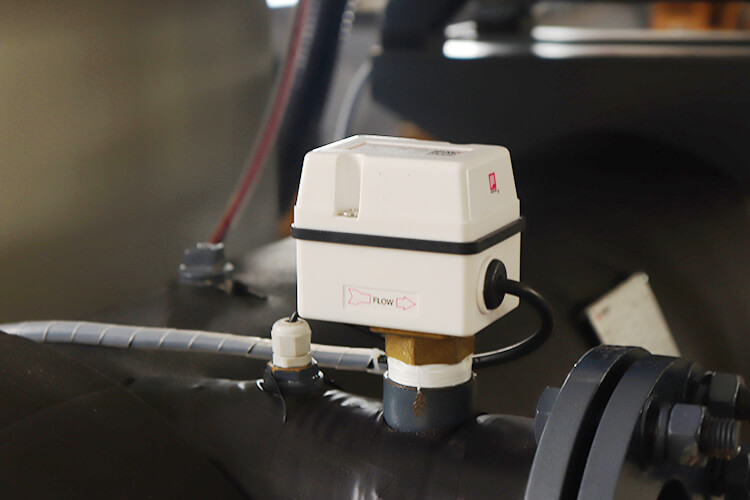
2. Insufficient Cooling Water Flow or Excessive Cooling Water Temperature
Both these conditions hinder heat dissipation, preventing the refrigerant’s temperature from being lowered, which in turn triggers a high-pressure alarm.
Solution: Verify that the size of the installed piping matches the chiller’s size. Check if the pump is functioning correctly and if the water valve is fully open.
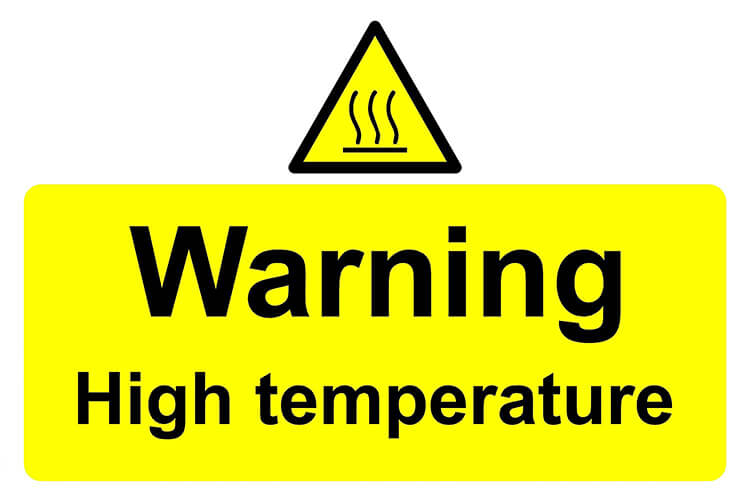
3. Cooling Water Tower Malfunction
A high-pressure alarm can be triggered if the cooling tower fails, interrupting the circulation and supply of cooling water to the chiller.
Solution: Inspect the cooling tower for any operational issues or defects.
4. Water Scale Accumulation
Water-cooled chillers operating for extended periods without maintenance can accumulate scale and other debris on the tube wall. This accumulation hampers the condenser’s effectiveness.
Solution: Consider hiring a professional descaling company to clean the chiller and remove the water scale.
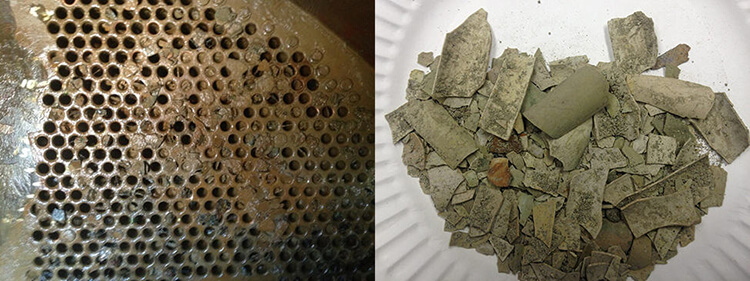
5. Overfilled Refrigerant
Overfilling with refrigerant is similar to the issue of air entrapment. Excessive refrigerant can’t condense into liquid form, occupies a significant part of the condensing pipe area, reducing condensing effectiveness, and consequently, raising the pressure.
Solution: Gradually vent some refrigerant from the low-pressure side to reach the system’s optimal pressure.
6. Expansion Valve Malfunction or Inadequate Opening
The expansion valve throttles the high-pressure liquid refrigerant into a vapor state. If the valve opening is too small, it can create high pressure at the condenser’s front side.
Solution: Gradually increase the expansion valve’s opening. If the valve is damaged, consider replacing it.
In summary, high-pressure alarms in water-cooled chillers can arise from a variety of causes, requiring careful and systematic troubleshooting. Always ensure qualified professionals perform any maintenance or adjustments to the chiller system.
For information on troubleshooting low-pressure alarms, please refer to our related guide here.

Hi Mr David
Please can I have an absorption chiller alarms code mean and troubleshooting
Hi Valentina, we are sorry that absorption chiller is not in our specialty.
Hola valentina
Somos expertos en chillers de absorcion 5548477112. Contactame para más información
Tengo una máquina de aire acondicionado Lennox, pero me aparece un código de error 026
Temperatura de condensación límite alto, puedes decirme que es, gracias
what the regard to the high oil pressure differential in screw compressor water chiller,after replace oil filter,pump down the compressor oil,replace compressor oil and r134a gas, the chiller still shutting down after running for few minute.what other thing that need to be look into please
Hola me llamo león, que pasa cuando el chiller se alarma por alta precion y se disparan los interruptores de los ventiladores y el swich se protege
Para mi páreser que se disparan o activan primero los interruptores del ventiladores después se protege
High pressure alarm on a/c machine ac787 keep saying high pressure alarm want let you do anything
thiết bị thường xuyên báo lỗi áp suất chênh lệch dầu và tự động tắt máy
por que o chiller da empresa vizinh a a minha casa produz um barulho constante (24h) que parece um chiado, um zumbido um fzfzfzzff muiiiito stressante e desconfortavel. Ele pode ter problemas de instalaçao? tipo economia na instalação , ? nao foi usado os coxins e amortecedores?
Olá, normalmente não se recomenda a instalação de grandes unidades de refrigeração perto de casas residenciais; produzem grandes ruídos. Penso que só pode consultar o proprietário para ver se ele pode colocar algumas vedações de absorção de ruído à volta do refrigerador para o reduzir.
e se o proprietario nao está nem um pouco interessado em resolver o problema? posso fazer uma parede do meu Lado no terreno que vai resolver?
Se o proprietário não consertar, talvez verificar com a polícia seja uma ótima solução.
Hi david, can you suggest the reasons for sudden load hunting in a chiller. Can we correlate with oil vent pressure and oil feed pressure
Hola tengo un enfriador Dukers dsm r-19, con la alerta P-1 y dos técnicos han venido y no quieren reparar. Por qué? Gracias x la ayuda
What can i do to increase delta T in evaporator without reducing flow
Increasing the temperature difference (delta T) in the evaporator without reducing the flow rate can enhance the efficiency and performance of the cooling system. Here are some strategies you can consider:
Improve Heat Transfer Surface: Enhance the evaporator’s heat transfer surface by using advanced fin designs or incorporating technologies like microchannels. This can increase the heat exchange efficiency, resulting in a higher delta T.
Optimize Refrigerant Flow: Ensure that the refrigerant flow distribution across the evaporator coils is uniform. Properly designed distributor systems can help evenly distribute the refrigerant, allowing for more effective heat transfer and a higher delta T.
Control Superheat: Implement precise superheat control to maintain optimal evaporator performance. By closely monitoring and controlling the superheat level, you can ensure that the refrigerant entering the evaporator is in the best state for heat absorption.
Enhance Airflow: Improve the airflow over the evaporator coils. This can be achieved by ensuring that the fans are working optimally, and the air distribution is uniform. Adequate airflow helps maintain efficient heat exchange and supports a higher delta T.
Maintain Clean Coils: Regularly clean and maintain the evaporator coils to prevent fouling and scaling. Dirty coils can hinder heat transfer and reduce delta T. Scheduled maintenance ensures efficient operation.
Use Advanced Refrigerants: Select refrigerants that provide efficient heat transfer characteristics and have suitable pressure-temperature profiles for your application. Some modern refrigerants can contribute to higher delta T values.
Optimize Temperature Control: Maintain accurate temperature control within the evaporator. Avoid unnecessary temperature overshooting or undershooting, as it can impact the overall delta T.
Check for Refrigerant Overcharge: Make sure the system is not overcharged with refrigerant. An overcharged system can lead to reduced heat transfer efficiency and lower delta T.
Consider Secondary Loops: In some cases, introducing secondary loops or heat exchangers can help in maintaining higher delta T values between the primary and secondary fluids.
what is the best solutions in “cold pump overload alarm in chiller”?
1. Obstructed Flow: Debris or sludge buildup in strainers or filters can obstruct the flow, causing the pump to work harder. This is a common reason for overload, especially if regular maintenance has been overlooked.
2. Pump Motor Issues: The pump’s motor could be malfunctioning or operating outside its rated capacity, causing it to overwork. This can be due to wear, damage, or electrical connection problems.
3. Incorrect System Pressure: If the system’s pressure is too high or too low, it can strain the pump, leading to an overload condition. This can result from issues like valve malfunctions or blockages in the system.
Nous avons un refroidisseur industriel qui refroidit l”eau de notre autoclave.
Suite à une fuite il c est vidé de son gaz réfrigérant et la pression est tombé.
Donc nous avons intervenus on a soudé la fuite et rempli le gaz.
Mais le problème maintenant c est que le compresseur du refroidisseur monte en pression.
Il faut a chaque fois vider le gaz et re-remplir et ainsi de suite
Nous vous remercions par avance.
Nos sincères salutations.
Je suis désolé d’entendre parler des problèmes que vous rencontrez avec votre refroidisseur industriel. Si le compresseur monte en pression, cela peut être dû à plusieurs raisons.
Surcharge de gaz réfrigérant : Après avoir rempli le gaz, il est possible que trop de réfrigérant ait été ajouté. Il est crucial de s’assurer que la quantité de réfrigérant dans le système est exactement celle recommandée par le fabricant.
Obstruction : Une obstruction dans le circuit, peut-être à cause d’une contamination lors de la soudure, pourrait causer une augmentation de pression. Assurez-vous que le système soit propre et exempt de toute obstruction.
Problèmes de ventilation : Assurez-vous que le condenseur soit propre et bien ventilé. Une mauvaise ventilation peut entraîner une augmentation de la pression.
Valves défectueuses : Une valve défectueuse peut ne pas réguler correctement la pression. Il serait judicieux de vérifier toutes les valves pour s’assurer de leur bon fonctionnement.
Je vous recommande de faire appel à un professionnel pour évaluer le système et déterminer la cause exacte du problème. Cela garantira que votre refroidisseur fonctionne de manière optimale et en toute sécurité.
En espérant que votre problème soit rapidement résolu. N’hésitez pas à nous contacter pour toute autre question.